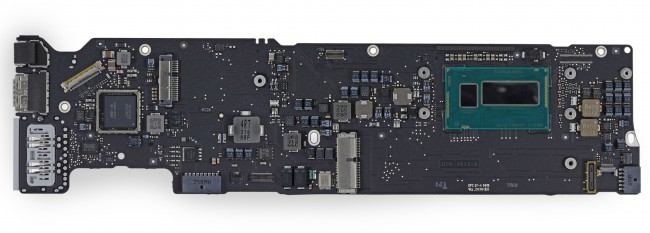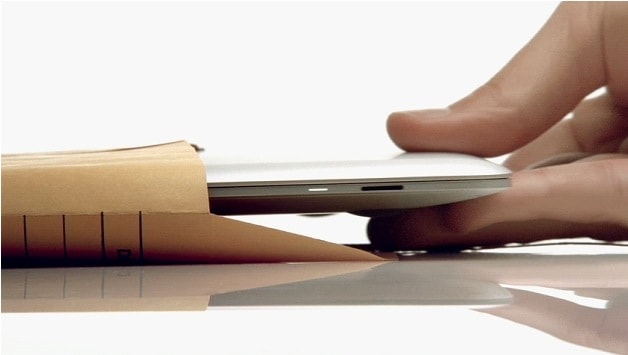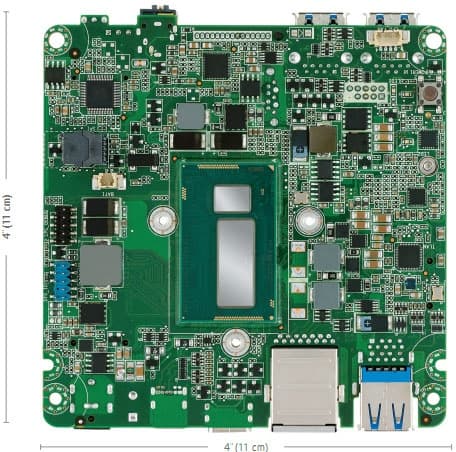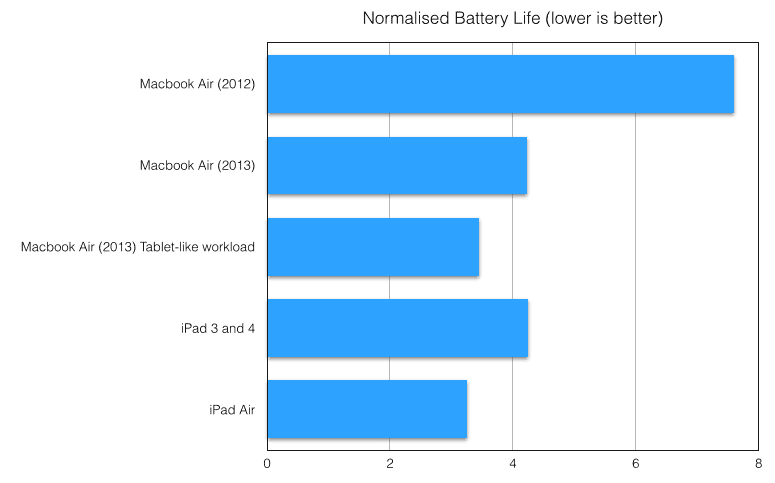Is Haswell the beginning of PC’s counter-attack?

A bit of bakground
Let’s turn back the clock to simpler times, when there were laptops and BlackBerries, most PC OEMs were making a ton of money from their Netbook division and many rumours of an impeding Netbook from Apple were at the order of the day. Apple shut down every rumor at the time, as Steve Jobs once said that he didn’t know how to build a computer for less than $1,000 that didn’t suck.
The first Macbook Air was released on January 2008: Instead of introducing its own Netbook Apple look the other way and made an incredibly expensive laptop. Its distinct features were how small it was for the power inside it, it was very light and very thin. Much of the world liked it but found it to be too slow for a such a high price, and there was a lot of criticism to the newly born form factor of small laptops with not-so-small computing power.
Fast forward a couple of years and Apple presented the iPad on Cupertino, their own take at tablets. It turns out that Apple had a counter-Netbook strategy, and one that has been so successful it basically is killing them. Its impact was so wide that is even cannibalising other segments of the market, including Apple’s MacBook line.
Apple proved it had the right idea all along: Tablets were the new netbooks and the Air-inspired laptops known as ultrabooks were the future of laptops, Apple kept reducing the price and size of its Macbook Air line while increasing their power (thanks to Intel’s improvements in power consumption with their ULV line of processors) and the industry followed suite with their Ultrabooks.
Things eventually got boring. The Airs and Ultrabooks kept getting a bit better every year but nothing major happened, tablets were still sale by sale reducing the size of the PC market. Surprising some people. The iPad was not that small and, while Netbooks usually offer a terrible experience, Ultrabooks do not, anywhere you can smuggle an iPad you can surely smuggle an Ultrabook, and these are real computers, way more powerful, flexible and with real keyboards.
Meanwhile Intel is getting worried, not being able to make a dent in the mobile space while the PC industry was shrinking, they had to answer with something, and answer they did.
Meet Haswell
Perhaps the most striking difference between tablets and PCs is the big difference there is battery life. While the first iPad could last easily 10 hours of web browsing and video your powerful ultrabook probably would die before hitting 5 hours, and if you used it in any more or less stressful manner you could expect that number to be cut in half or perhaps even less. It’s not a rare sight to see people on airports carrying iPads with a keyboard accessory, something that seems absurd to some of us, but we get it: That iPad lasts 10 hours, from NYC to Paris you don’t have to worry about running out of juice.
Haswell improves over Ivy Bridge in many ways, but by far the most interesting improvement comes in its ULT and ULX variants, which stand for “Ultra Low” and “Ultra Low eXtreme” respectively. ULT is meant mostly for Ultrabooks while ULX is mostly for tablets. The Ultra Low monikers may sound like plain hyperbole, and perhaps they were when applied to Ivy Bridge, but offer a two word glimpse at the future of portable PC computing.
As I noted in my MacBook Air 11.6″ review using Mac OS X the battery life can reach up to 11 hours, that’s tablet-like battery life (to get that much time you obviously also need to use it like one). Apple claims 10 hours of web browsing battery life for its iPads, while it claims 9 hours with its MacBook Air 11.6″. It’s worth mentioning that these tests are not directly comparable because the workload used to calculare battery life on the Mac is obviously heavier than the workload used on the iPad. What many may not initially realise is the iPads from last year actually had a bigger battery than the MacBook. If we normalise to capacity (including the new iPad Air and the Macbook Air from 2012, I don’t include other ultrabooks because hardware variations mean differences can be accounted by differences on other components, the 2012 Air and 2013 Air are basically identical save for Ivy Bridge v. Haswell):
Not bad! Obviously the comparison is still a bit unfair, the screen on the Air is a mere TN panel with a resolution of 1336 x 768 while the iPad uses a much better IPS display with a 2048 x 1536 resolution, but this goes both ways: The performance of Apple’s A7 isn’t nowhere near the performance of Haswell. Obviously tablets, especially the new Air, have a volumetric and weight advantage over ultrabooks, but you are not supposed to hold your ultrabook with one hand while using it with the other, so the comparison isn’t as straightforward as it may seem, nor they include a keyboard..
Can PCs strike back?
Touching has a different feeling to it than pointer input, one that people seem to enjoy more. It feels more natural (because it is) and is easier to learn. Give a chimpanzee a touchscreen and he will figure out more or less how to use it in a few minutes, give him a laptop and you will find him playing with a banana one minute later. However, is well known that most productivity tasks require a keyboard, even social networking or chatting can be frustrating using a touchscreen.
Let’s revise some anecdotal evidence: My mom bought an iPad because she enjoyed using one in the store. She likes it to see a few sites, check Facebook and watch videos. She absolutely hates it to do work on, ignoring the glaring faults of iOS when it comes to basic productivity tasks (which Android, thankfully, doesn’t share), like sending a single email with a picture and a text documents attached to it. She hates writing on it, which she has to do as she works with a ton spreadsheets.
The couch has been conquered by the tablet, but many people today, and more so in the future, need to write stuff on their computers for work. If laptops manage to shake off the, quite frankly, miserable state of the displays they ship on >$800 dollar computers, Haswell and future version of Intel microarchitectures may cause the PC industry to start growing again. Especially now that we’re starting to see laptops with touchscreens (or crazy form factors that I don’t think could ever succeed). Famously Steve Jobs said that Netbooks were not better at anything than a laptop, well, turns out tablets can’t do anything my smartphone can’t. Tablets are only better for things that require a big screen (couch browsing, reading) and even that is being to some extent taken by the phablet market. People is starting to try and avoid carrying another device that adds exactly zero features to the one in his pocket. And this isn’t a conjecture, the iPad market didn’t grow last year, it was basically stagnant year-to-year.
The rise of the 7″ form factor points to this development, people prefer their tablets to be smaller. At 10″ they just may as well carry a laptop, at 7″ they can justify it, but they may as well carry a 5.7″ smartphone and be done with it, and so the rise of phablet began.
Laptops on the other hand still stand proudly at the top of the technology chain, they’re absurdly superior at actually doing stuff instead of just consuming it. Give them battery life and a good screen and maybe the future only holds space for two devices: Smartphones and Laptops. With tablets being relegated for a few who want a device just to use on their coach or to read or for children to play with.







So, what would you say on so called “convertables”? Ultrabooks with touch screens and flippable screen? E.g. Lenovo’s Yoga series: http://www.ultrabookreview.com/2218-top-ultrabook-convertible/